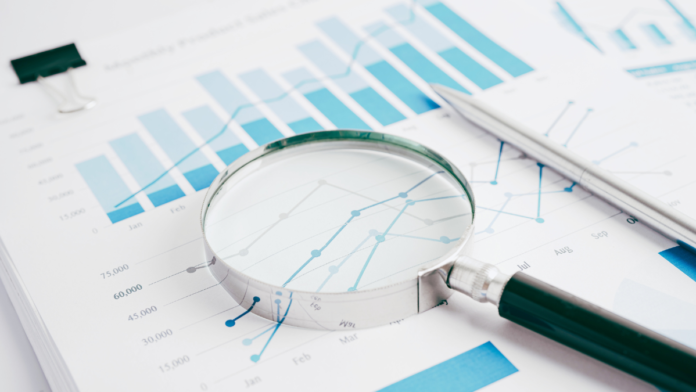A stock market crash is characterized by a sudden and significant drop in stock prices. Preparing for the next crash involves knowing when to hold and when to sell, diversifying your portfolio, and consulting with a financial advisor. In this article, HTC News will discuss what you need to know about the Stock Market Crash and how to prepare for it.

A Brief History of Stock Market Crashes
It’s been almost a century since the infamous 1929 stock market collapse that triggered the Great Depression. While the world hasn’t experienced a crash of that magnitude since then, there have been numerous instances where stocks have plummeted rapidly.
Enron
Time Frame: Late 2001
Fall: From over $90 to under $1
Details: The energy company collapsed due to massive accounting fraud, leading to one of the biggest bankruptcies in history and significant losses for investors.
Lehman Brothers
Time Frame: 2008
Fall: From $86 to $0
Details: The investment bank’s collapse during the financial crisis marked one of the largest bankruptcies in history, significantly impacting global financial markets.
Bear Stearns
Time Frame: 2007 – 2008
Fall: From $133 to $2
Details: The investment bank was sold to JPMorgan Chase at a fire sale price after its massive exposure to subprime mortgages led to a liquidity crisis.
Valeant Pharmaceuticals (now Bausch Health)
Time Frame: 2015 – 2016
Fall: From $262 to around $11
Details: The company faced scrutiny over its drug pricing and accounting practices, leading to a massive decline in its stock price.
Peloton (PTON)
Time Frame: 2021 – 2022
Fall: From around $160 to under $30
Details: After a surge in demand during the COVID-19 pandemic, the company’s stock plummeted due to slowing sales and supply chain issues.
Identifying a Stock Market Crash
How can you distinguish between a stock market crash and a routine bad day? Here’s what you should know:
Magnitude of Decline
Stock Market Crash: Sudden and severe drop, often over 10%.
Routine Bad Day: Smaller decline, typically 1-2%.
Duration
Stock Market Crash: Sharp decline over a day or a few consecutive days.
Routine Bad Day: Decline contained within a single trading session.
Volume of Trading
Stock Market Crash: Significantly higher trading volumes due to panic selling.
Routine Bad Day: Higher but not extreme trading volumes.
Market Sentiment and News
Stock Market Crash: Accompanied by widespread negative news and significant macroeconomic events, with extreme pessimism.
Routine Bad Day: Triggered by less severe news, such as disappointing earnings or minor economic data, with cautious sentiment.
Impact on Different Sectors
Stock Market Crash: Broad impact across almost all sectors.
Routine Bad Day: Impact may be concentrated in specific sectors.
Historical Context
Stock Market Crash: Often follows economic imbalances or speculative bubbles.
Routine Bad Day: Part of normal market fluctuations and corrections.
What Constitutes a Stock Market Crash?
While there’s no precise number that signifies a crash, here’s some context: The S&P 500 index typically fluctuates between -1% and 1% on any given day. Movements beyond these bounds could indicate significant activity, either positive or negative.
A 7% drop in the S&P 500 in a single day is a rare occurrence that can halt trading for 15 minutes. This signals a very bad day on Wall Street, underlining the severity of the situation. A crash, on the other hand, involves a stinging and sudden drop in stock prices, usually following an upward trend, known as a bull market.
How to Respond During a Stock Market Crash
Now that you have an idea of how a stock market crash occurs, here are possible things that you might consider doing:
1. Assess Your Investments
Panic-selling during a temporary slump is rarely a wise move. Review your initial stock research to determine if your reasons for investing still hold true. This approach helps prevent the hasty sale of valuable long-term investments while providing rational grounds to sell if necessary.
2. Diversify Your Portfolio
Diversification is critical to mitigating investment risk. Fanning out your investments across different asset classes, like stocks and bonds, can smooth out the impact of market volatility. If you’ve adopted a “set it and forget it ” strategy, such as using a target-date retirement fund or a robo-advisor, diversification is already built in, and it’s best to remain patient through downturns.
3. Consider Buying the Dip
Market downturns can present buying opportunities. Suppose you have an emergency fund, retirement savings, and cash for daily expenses. In that case, consider investing in stocks that have dropped in price but have long-term solid potential. Dollar-cost averaging, where you invest a fixed number regularly, can help mitigate the risk of poor timing.
4. Seek Professional Advice
When the market is volatile, self-doubt can lead to poor decisions. A financial advisor can give you an independent perspective and help you stay on course with your financial plan.
5. Focus on the Long Term
Selling investments when there is a downturn locks in losses. Historical data shows that markets recover over time. For example, during the COVID-19 crash in early 2020, the S&P 500 lost over 30% but recovered by August of the same year. Staying invested allows you to benefit from eventual rebounds.
6. Optimize Your Strategy
Market downturns can be a good time for Roth conversions, where you transfer depreciated assets from a traditional IRA to a Roth IRA. This strategy allows for tax-free growth once the market recovers. However, consult a tax professional to determine if this move is right for you, as it may trigger additional taxes.
Conclusion
Stock market performance in 2023 demonstrated that despite overall positive returns, investor anxiety remains due to economic uncertainties of the world. Instead of fixating on whether the stock market is crashing, focus on maintaining a diversified portfolio, planning for the long term, and strategically leveraging market downturns. This approach ensures you’re prepared for the next stock market crash.
Frequently Asked Questions About the Collapse of Stock Market
What is a stock market collapse?
A stock market collapse is a sudden, sharp decline in stock prices across a significant section of a stock market, leading to a considerable loss of paper wealth.
How can I tell if the stock market is crashing?
A crash is typically identified by a rapid drop in major stock indexes like the S&P 500, often by 7% or more in a single day, causing trading halts and widespread panic.
What should I do during a stock market crash?
During a crash, it is generally advisable to stay calm, review your investments, maintain a diversified portfolio, consider buying undervalued stocks, and consult with a financial advisor.
Is it a good idea to buy stocks during a market crash?
If you are financially prepared, buying during a crash can be beneficial as stocks are “on sale.” Ensure you have emergency funds and other financial bases covered before investing.
How often do stock market crashes occur?
Significant stock market crashes are relatively rare. Some notable crashes in the last century include the 1929 crash, the 1987 Black Monday, the 2000 Dot-Com Bubble, the 2008 financial crisis, and the 2020 COVID-19 crash.




















